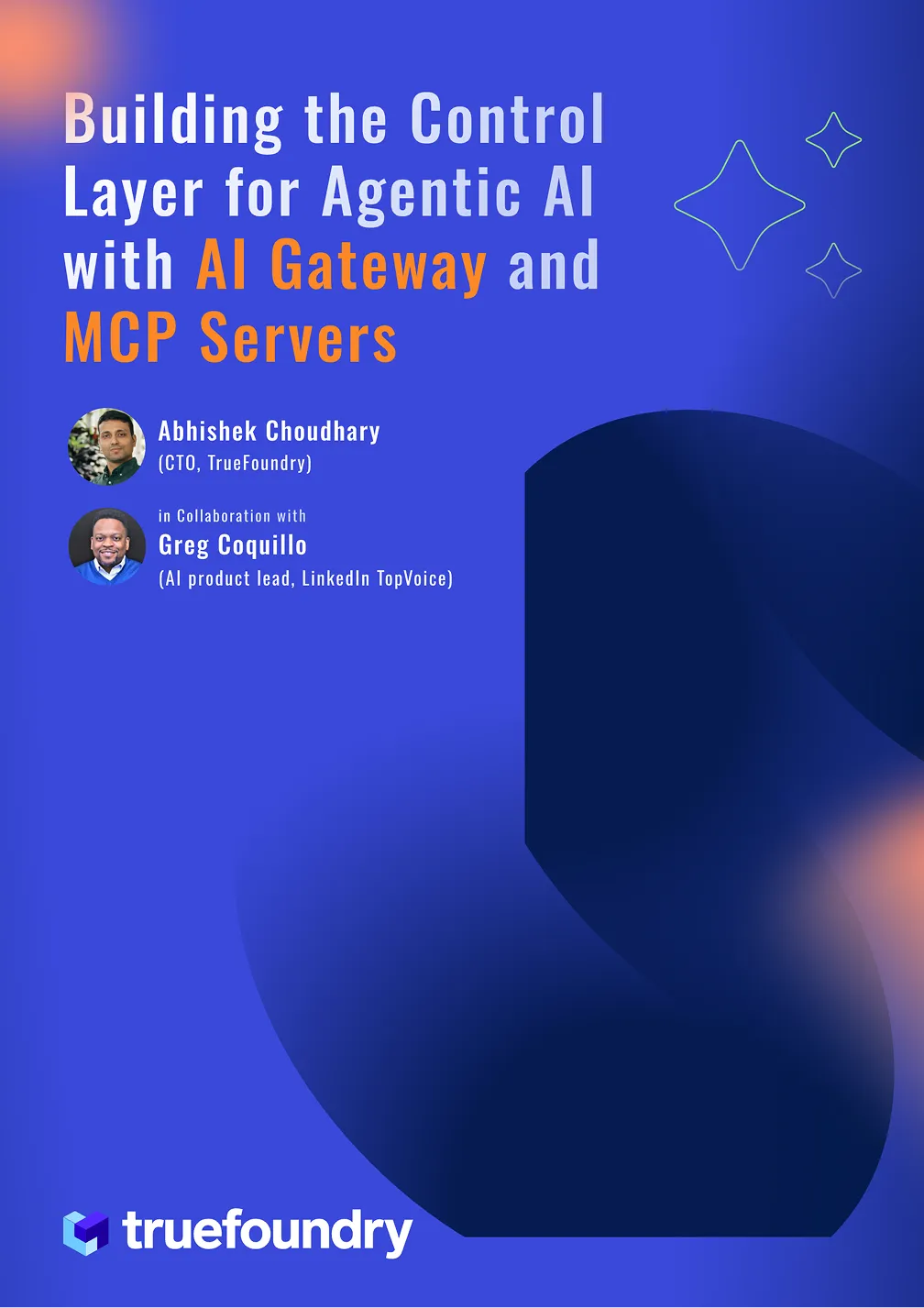What is Shadow AI?
Artificial intelligence has rapidly become the engine of modern business innovation, powering everything from productivity tools to customer analytics.
But behind this surge lies a quieter and riskier trend, Shadow AI. It is the growing use of unapproved AI tools and models by employees who simply want to get work done faster. On the surface, this looks like harmless experimentation, but in reality, it often bypasses corporate security, compliance, and data governance.
Just as “shadow IT” once exposed companies to hidden vulnerabilities, shadow AI is creating a new generation of invisible risks where data can leak, models can misfire, and decisions cannot be traced. As enterprises race to adopt AI responsibly, understanding how shadow AI forms, spreads, and impacts business operations has become critical. This article explores its origins, risks, and the path toward effective AI governance.
What is Shadow AI?
Shadow AI refers to the use of artificial intelligence tools, models, or services within an organization without official approval or oversight from IT, data, or security teams.
It often includes generative AI tools such as ChatGPT, Midjourney, or Copilot, as well as AI-powered analytics platforms that employees adopt independently to boost productivity or creativity.
The concept mirrors the earlier phenomenon of “shadow IT,” where workers used unauthorized software or cloud services to bypass slow approval processes. However, shadow AI introduces an even greater level of risk because these tools can process sensitive data, generate automated outputs, or make decisions that directly affect business operations.
For example, an employee might paste confidential documents into an AI chatbot to summarize them or use an unverified model to analyze customer data. While these actions may seem efficient, they can expose private information to external systems and create compliance and security blind spots.
Shadow AI represents the gap between an organization’s formal governance policies and how AI is actually being used day to day. Recognizing it is the first step toward regaining visibility and control in an increasingly AI-driven workplace.
How Shadow AI Emerges?
Shadow AI often begins with good intentions. Employees use AI tools to make their work easier, faster, and more creative. When official channels move slowly or fail to provide solutions, individuals turn to public or third-party AI tools. Over time, this creates an invisible layer of activity outside organizational control.
Several key factors contribute to the rise of shadow AI:
- Accessibility of AI tools: Many AI platforms are freely available online and require no setup. Anyone with a browser and internet access can start generating content, writing code, or analyzing data instantly.
- Productivity pressure: Teams are under constant pressure to deliver results quickly. AI tools promise efficiency and creativity, making them tempting shortcuts for employees trying to meet deadlines.
- Lack of clear policies: Many organizations have not yet defined what AI tools are allowed, what data can be shared, or how AI usage should be monitored.
- Embedded AI features: Everyday applications such as email, spreadsheets, and CRMs now include AI capabilities, making it harder for IT teams to track their usage.
What begins as harmless experimentation can rapidly scale across departments. As shadow AI grows, so do the risks, from data exposure and compliance issues to inconsistent outputs and decision errors. Visibility and governance are the first steps to keeping AI use under control.
TrueFoundry addresses this by providing a centralized AI platform where teams can safely build, deploy, and monitor AI models with enterprise-grade security. Instead of blocking AI use, TrueFoundry gives employees a secure workspace to innovate — reducing the incentive for Shadow AI to emerge in the first place.
Risks of Shadow AI
While shadow AI may start as an innocent attempt to improve productivity, it introduces serious risks that can undermine security, compliance, and trust across the organization. These risks often remain hidden until a major incident occurs.
Data Privacy and Leakage
Employees may unknowingly expose sensitive or proprietary data when they input confidential documents, code, or customer details into unapproved AI tools. Once uploaded, this information can be stored, reused, or accessed by third parties without the company’s knowledge.
Compliance Violations
Unregulated AI usage can breach data protection laws such as GDPR, HIPAA, or PCI DSS. Without proper oversight, organizations risk hefty fines or legal action for mishandling personal or regulated information.
Lack of Transparency and Accountability
AI-generated content or decisions made using shadow tools often lack traceability. When there is no audit trail, it becomes impossible to verify how an output was generated or whether it was influenced by bias or misinformation.
Operational Inefficiency
Different teams adopting separate AI tools can lead to data silos, duplication, and inconsistencies. This makes it difficult to maintain quality standards or integrate outputs across departments.
Reputational Damage
If unapproved AI tools produce inaccurate, biased, or offensive content, the consequences can be public and costly.
Shadow AI turns innovation into a liability when governance is absent. Recognizing these risks early helps organizations shift from blind adoption to responsible, secure, and auditable AI usage.
TrueFoundry turns AI usage from fragmented and risky to structured and auditable, reducing Shadow AI exposure while enabling innovation.
Business impact of Shadow AI
Shadow AI influences businesses far beyond security or compliance concerns. Its effects can ripple across finances, operations, and strategic decision-making. Understanding these impacts helps organizations see why governance is critical.
Financial and Resource Implications
- Hidden Costs: Unapproved AI tools may have subscription fees or licensing requirements that teams adopt without coordination.
- Duplication of Effort: Multiple departments may use similar tools independently, leading to wasted spending and inefficient resource allocation.
- Remediation Costs: Fixing issues caused by shadow AI, such as data leaks or compliance breaches, can be expensive and time-consuming.
Operational and Strategic Risks
- Decision-Making Errors: Outputs from unverified AI tools can be inaccurate or biased, affecting marketing, product development, or financial strategies.
- Fragmented Innovation: Independent AI adoption creates silos. Teams may innovate in isolation, resulting in outputs that are difficult to integrate across the organization.
Regulatory and Legal Exposure
- Non-Compliance: Shadow AI increases the likelihood of violating data privacy laws and industry regulations, exposing the organization to fines and legal action.
- Accountability Gaps: Decisions based on shadow AI lack traceability, complicating audits and risk reporting.
Data and Intellectual Property Risks
- Loss of Control: Sensitive data or proprietary models used in external AI platforms may escape organizational oversight, threatening competitive advantage.
- Potential Leaks: Unauthorized AI usage increases the chance of accidental exposure of confidential information.
While shadow AI can provide short-term productivity gains, its hidden costs, operational inefficiencies, and risk exposure can far outweigh the benefits. Organizations need visibility, governance frameworks, and clear policies to turn AI into a controlled, reliable business asset rather than a liability.
How to detect Shadow AI in your Organization
Shadow AI often hides in plain sight. Employees adopt AI tools to speed up work, leaving IT and governance teams unaware. Detecting it requires both visibility and understanding.
Start with Tool Discovery
Automated platforms like CASB, DLP solutions, or AI monitoring software can help identify unapproved AI tools. Cross-check these findings against your approved AI inventory to spot gaps.
Monitor Usage and Behavior
Look for unusual patterns: large uploads, frequent API calls, or new OAuth connections. Unexpected spikes in network traffic may reveal hidden AI activity.
Engage Employees Proactively
Encourage staff to share which AI tools they are using and why. Surveys, interviews, or internal forums can reveal shadow AI adoption. Create a safe environment where employees feel comfortable reporting tools they rely on.
Audit Data Flows
Map where sensitive or proprietary data is going. Identify systems where AI-generated outputs are influencing decisions without oversight. Any gaps in monitoring highlight potential exposure points.
Prioritize Based on Risk
Not all shadow AI usage is equally critical. Evaluate tools according to data sensitivity, vendor reliability, and operational impact. Focus remediation efforts on high-risk areas first.
Detecting shadow AI is about creating clarity. By combining technology, employee collaboration, and data audits, organizations gain actionable insight. This visibility allows for secure adoption of AI while minimizing risk, turning a hidden threat into a manageable part of an innovation strategy.
Instead of relying on fragmented tools, organizations can use TrueFoundry as their AI observability layer, gaining unified visibility into every AI workflow — approved or otherwise.
Shadow AI vs Governed AI
Understanding the difference between shadow AI and governed AI is critical for organizations aiming to balance innovation with risk management.
Shadow AI emerges when employees adopt AI tools without oversight. These tools may accelerate productivity in the short term, but they operate outside formal policies, governance structures, or compliance frameworks. Data entered into these systems can be exposed unintentionally, and outputs may influence decisions without accountability or traceability. Shadow AI creates invisible risks, including data leaks, regulatory violations, and inconsistent results across departments.
Governed AI, by contrast, is integrated into the organization with clear policies, approval processes, and oversight. It ensures that all AI tools comply with security, privacy, and regulatory standards. Data handling is monitored, model outputs are auditable, and decision-making processes are transparent. Employees have access to safe, approved AI platforms that meet their productivity needs while aligning with organizational goals.
A simple comparison highlights the distinction:
- Visibility: Shadow AI is hidden; governed AI is fully monitored.
- Control: Shadow AI lacks oversight; governed AI follows approval workflows.
- Compliance: Shadow AI may breach regulations; governed AI enforces compliance.
- Data Security: Shadow AI risks exposure; governed AI protects sensitive information.
Ultimately, the presence of shadow AI often signals unmet business needs. By replacing unsanctioned tools with governed AI platforms, organizations can retain the benefits of innovation while minimizing risks. Proper governance turns AI adoption from a hidden vulnerability into a structured, strategic advantage.
Strategies to Manage and Prevent Shadow AI
Preventing shadow AI is essential for organizations seeking to balance innovation with security and compliance. Shadow AI arises when employees adopt AI tools outside formal governance, often to boost productivity or solve problems quickly. While these tools may provide short-term gains, they introduce risks to data privacy, compliance, and operational consistency.
A proactive approach focuses on clear policies, secure tools, and employee engagement. First, organizations need to establish clear AI usage policies that define which tools are approved, what types of data can be used, and standards for validating AI-generated outputs. Policies should be easy to understand and communicate, so employees know exactly what is allowed and why governance matters.
- Provide Approved AI Platforms: Offer enterprise-approved AI tools that meet business needs while maintaining security and compliance. When employees have access to trusted solutions, the temptation to use unregulated tools decreases.
- Educate and Monitor: Conduct regular training programs to explain the risks of shadow AI, including data exposure and regulatory violations. Pair this with monitoring systems that track AI usage, detect anomalies, and audit data flows. This combination ensures early detection of hidden tools and mitigates potential risks before they escalate.
Beyond technology and training, organizations should establish cross-functional governance teams that include IT, security, compliance, legal, and business stakeholders. These teams can guide AI adoption, enforce policies, and respond to new risks proactively.
Finally, organizations must iterate and improve their approach. AI tools and usage patterns evolve rapidly, so policies, training, and monitoring systems should be reviewed and updated regularly.
By implementing these strategies, companies can reduce shadow AI usage, protect sensitive data, ensure regulatory compliance, and create a safe environment for AI-driven innovation. Shadow AI shifts from being a hidden threat to a manageable and strategic opportunity.
Role of AI Governance Platform
An AI governance platform plays a critical role in controlling shadow AI and ensuring responsible adoption across an organization. These platforms provide visibility into AI usage, enforce policies, and help manage risks before they escalate.
TrueFoundry offers an integrated platform that:
- Discovers and monitors AI usage across the enterprise.
- Secures data pipelines with fine-grained access and encryption controls.
- Implements policy automation to enforce compliance at every step.
- Delivers observability dashboards that provide real-time insights into how AI systems are being used.
By integrating these capabilities, AI governance platforms transform AI from a potential liability into a controlled and strategic asset. They enable organizations to maintain compliance, protect data, and foster innovation without sacrificing security or accountability.
The Future of AI Governance and Shadow AI
As AI adoption continues to accelerate, shadow AI will remain a growing challenge, making governance more critical than ever. Organizations must take proactive steps to ensure AI is used safely and effectively across all teams.
Stricter regulations are emerging worldwide, requiring companies to comply with privacy, data protection, and ethical standards. At the same time, AI-native governance platforms are evolving to use AI itself for real-time monitoring, anomaly detection, and risk assessment, making oversight more efficient and scalable.
TrueFoundry is building toward an adaptive governance future, where AI models are continuously observed, potential risks are automatically flagged, and compliance evolves in real time with changing regulations.
The future of governance isn’t about rigid control — it’s about dynamic alignment between innovation, safety, and accountability. With platforms like TrueFoundry, organizations can make this balance a reality.
Real-world examples
Shadow AI can create tangible risks, and organizations have encountered it in several ways.
CPA Firm Data Exposure
A Canadian CPA firm faced a compliance issue when auditors uploaded client data into an open-source large language model for analysis. This unapproved AI use led to errors in audit work and required disclosure to the client, triggering a regulatory complaint.
JPMorgan Chase AI Restrictions
JPMorgan Chase and other major banks restricted employee use of generative AI tools such as ChatGPT. They cited risks of data leaks and compliance violations, leading to stricter controls on AI tool access.
XM Cyber Shadow AI Detection
Research by XM Cyber revealed that over 80% of organizations showed signs of shadow AI activity. Activities included sales teams entering customer data into ChatGPT, HR uploading resumes into Claude, and executives using AI for strategic planning. Many of these activities were not detected by traditional security tools.
These examples highlight the real risks of shadow AI, including data exposure, compliance violations, and hidden usage. Organizations need robust AI governance to manage these risks effectively.
Conclusion
Shadow AI is a growing challenge as employees increasingly adopt AI tools outside formal oversight. While it can boost productivity and creativity, it also introduces risks such as data exposure, compliance violations, inconsistent outputs, and operational inefficiencies. Organizations that ignore shadow AI risk face hidden liabilities that can affect finances, reputation, and decision-making.
TrueFoundry empowers enterprises to uncover, control, and scale AI safely — providing the governance backbone needed to transform Shadow AI from a liability into a competitive advantage.
Implementing robust AI governance frameworks, including approved tools, monitoring, employee training, and clear policies, allows companies to harness AI safely and strategically. By proactively managing shadow AI, organizations can transform it from a hidden threat into a controlled asset that drives innovation responsibly.
Built for Speed: ~10ms Latency, Even Under Load
Blazingly fast way to build, track and deploy your models!
- Handles 350+ RPS on just 1 vCPU — no tuning needed
- Production-ready with full enterprise support
TrueFoundry AI Gateway delivers ~3–4 ms latency, handles 350+ RPS on 1 vCPU, scales horizontally with ease, and is production-ready, while LiteLLM suffers from high latency, struggles beyond moderate RPS, lacks built-in scaling, and is best for light or prototype workloads.







.png)









